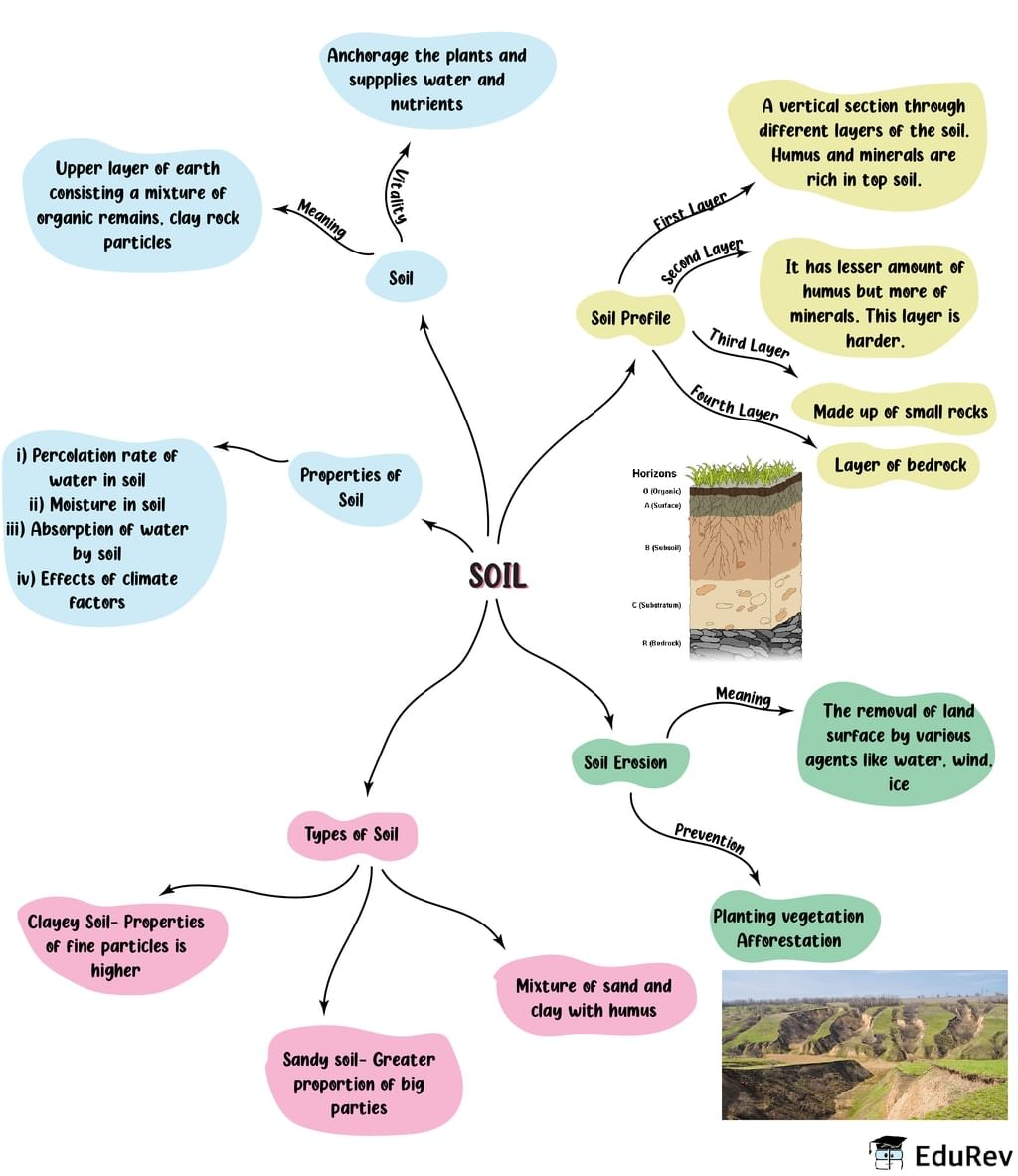UPSC Exam > UPSC Notes > Class 6 to 12 NCERT Mindmaps for UPSC Preparation > Mind Map: Soil
Mind Map: Soil | Class 6 to 12 NCERT Mindmaps for UPSC Preparation PDF Download

The document Mind Map: Soil | Class 6 to 12 NCERT Mindmaps for UPSC Preparation is a part of the UPSC Course Class 6 to 12 NCERT Mindmaps for UPSC Preparation.
All you need of UPSC at this link: UPSC
FAQs on Mind Map: Soil - Class 6 to 12 NCERT Mindmaps for UPSC Preparation
| 1. What is soil erosion? |  |
Ans. Soil erosion is the process by which topsoil is removed or displaced from the land surface. It is usually caused by wind, water, or human activities such as deforestation and overgrazing. Soil erosion can lead to the loss of nutrients, reduced soil fertility, and decreased agricultural productivity.
| 2. How can soil erosion be prevented? |  |
Ans. There are several measures that can be taken to prevent soil erosion. These include planting cover crops, terracing sloping lands, contour plowing, mulching, and constructing barriers such as windbreaks and retaining walls. Additionally, practicing sustainable land management techniques, such as crop rotation and conservation tillage, can also help reduce soil erosion.
| 3. What is soil pH and why is it important? |  |
Ans. Soil pH is a measure of the acidity or alkalinity of the soil. It is important because it affects the availability of nutrients to plants. Different plants have different pH requirements, and soil pH can influence nutrient availability and microbial activity in the soil. Testing and adjusting soil pH can help optimize plant growth and productivity.
| 4. What are the different types of soil? |  |
Ans. There are several different types of soil, classified based on their composition and texture. Some common types include sandy soil, clay soil, silt soil, loam soil, and peat soil. Each type has different properties, such as water-holding capacity, drainage, and nutrient content, which can impact plant growth and crop production.
| 5. How does soil pollution occur and what are its effects? |  |
Ans. Soil pollution occurs when harmful substances, such as chemicals, heavy metals, or waste materials, are introduced into the soil. This can happen through industrial activities, improper waste disposal, agricultural practices, or accidental spills. Soil pollution can have detrimental effects on plant and animal life, as well as human health. It can lead to reduced crop yields, contamination of groundwater, and the disruption of ecosystems.
Related Searches





















